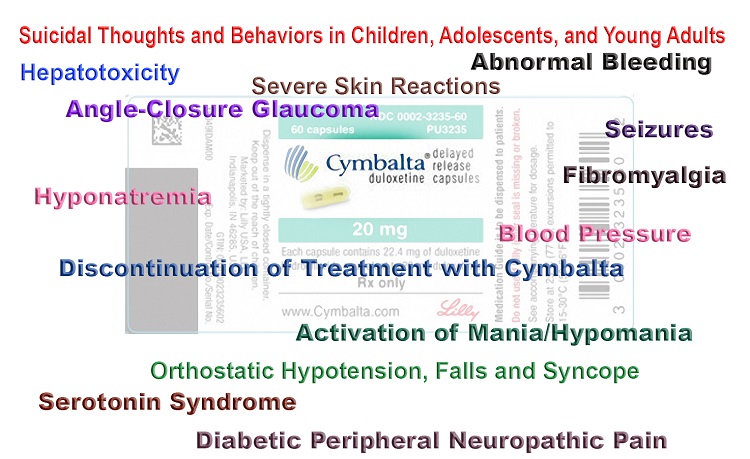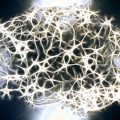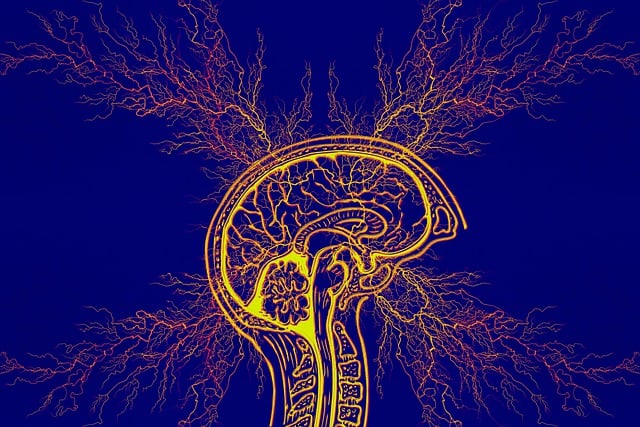What is Addiction?
When we hear the word addiction, what comes to mind are things like illicit drugs, nicotine, alcohol, or behaviors that are obsessively pursued like gambling, sex, or even exercise. Here are a couple of definitions of addiction:
- “An addiction is an urge to do something that is hard to control or stop. If you use cigarettes, alcohol, or drugs like marijuana (weed), cocaine, and heroin, you could become addicted to them.”
- “Exhibiting a compulsive, chronic, physiological or psychological need for a habit-forming substance, behavior, or activity addicted to heroin/alcohol/gambling addicted smokers.”
As you can see, addiction is almost always framed as something the individual does, something he/she cannot easily stop. While many studies readily admit that certain substances are chemically addictive, the onus for succumbing to addiction is always placed upon the individual. I would like to offer a different view on addiction, one that has less to do with the person and more with the effects of certain substances and behaviors. Some substances are inherently addictive, and some behaviors may become addictive. That is, they change brain chemistry in such a manner as to drive repeated consumption, or addiction, as defined in the textbooks.
While we all recognize drugs and alcohol as addictive substances, today, one of the most common addictions is to food, specifically to carbohydrates. Yes, carbohydrates. What is a carbohydrate? It is basically a sugar such as glucose, fructose, and starch. I am sure by now you have heard the news that sugar is addictive, but do you know that there are many foods that are high in carbohydrates that don’t taste sweet at all? For example bread, rice, potatoes, legumes, etc., are full of sugar without tasting sweet. In these foods the sugar is in the form of starches, which are long chains of glucose molecules, but since we lack enzymes that can break these long chains into individual glucose molecules, we don’t taste their sweetness. Yet they are full of addictive sugar. This is an article about certain foods that we consume daily and that are also addictive.
Before we talk about the addictive components of foods, let us first look at what is happening in the brain to form an addiction.
The Addicted Brain
In the brain, there are always many systems that work together, though there are also specific regions that are associated with specific tasks. The prefrontal cortex, which is basically the forehead and the top of the head a few inches deep, is associated with logic, creativity, mathematics, and similar activities. In the center of the brain, there are more ancient structures that together form what is called the limbic system. The limbic system is often described as the reptilian or primitive brain because it is associated with immediate responses, such as fight-or-flight, a most important function ensuring survival. It is also the center for controlling behavioral and emotional responses, such as reproduction, feeding, and caring for the young. This region is the center of our emotions. In the lower part of the brain, located in the back of the head, sits the most ancient of brain regions, the cerebellum, and the brain stem. These regions control what is called the autonomic nervous system, the unconscious functions that maintain life such as breathing and heartbeat.
The regions of the brain most involved with addiction are in the limbic system, but the prefrontal cortex is involved as well, alterations in the prefrontal cortex is why a person “under the influence” exhibits a modified judgment ability. The poster child of the limbic system is the amygdala, which processes fear and anxiety. Other brain regions involved with emotions are the hypothalamus, hippocampus, and the limbic cortex. All of these areas may respond to substances that can cause addiction by means of an increase or decrease of various neurotransmitters.
The actual process of addiction happens at the molecular level. When a person drinks a glass of wine, for example, several neurons are activated by the alcohol entering the brain. This activation occurs at a very basic molecular level through what are called receptors. Receptors are like the locks on a door. To open the door, one must have a key that fits. For example, alcohol provides the key to brain receptors that control several important neurotransmitters. GABA (gamma-aminobutyric acid) is the brain’s primary inhibitory neurotransmitter. It slows things down, reduces anxiety, and induces relaxation. Anesthetics, barbiturates, benzodiazepines, and alcohol increase GABA. Another neurotransmitter affected by alcohol is glutamate, the brain’s primary excitatory neurotransmitter. In general, glutamate induces a heightened level of awareness and excitation. When GABA and glutamate are both activated by alcohol, the effect is somewhat of a neural stalemate (see here). Consequently, when lots of neurons are not firing in the brain, thinking, and even moving become difficult – familiar consequences of excessive alcohol consumption.
When someone consumes alcohol regularly, they develop a tolerance to it. Behaviorally, it requires more alcohol to reach the state of inebriation than it did when the person first began drinking. Chemically, tolerance means that the neuronal receptors have been modified in a way that the neurons become less sensitive to the alcohol. The modification is via ionic channels, which are quite complex, but if interested, an excellent write-up can be found here. Eventually, with repeated exposure, cellular internalization (the pulling of the receptors inside the cell), also referred to as the downregulation of the receptors, ensues. This is a protective mechanism. Since the cell does not want the substance to enter, it removes its receptors. As a result, there is an observable behavioral increase in tolerance of alcohol. With the downregulation of receptors, the person has to drink more alcohol to gain the same satisfaction as they experienced previously. Once tolerance has started, addiction begins. Addiction is thus defined as seeking more of a substance in order to receive the same pleasure as before.
The motivation to sustain an addictive behavior is mediated in part by the drive to reach that initial feeling of inebriation before tolerance and the biochemical changes in receptors were induced. Here, another neurotransmitter plays a role. When one experiences or even perceives pleasure or reward, dopamine is released from neurons in a region of the brain called the ventral tegmental area (VTA). Neurons in this region communicate with neurons in the prefrontal cortex (PFC), where planning takes place. When dopamine is released, the PFC takes notice and tells us that the feeling justifies repetition of the underlying experience. It pushes us to seek out the rewarding behavior or substance. Like with other regions of the brain, tolerance develops over time.
When the substance one is addicted to becomes unavailable, withdrawal follows. Withdrawal is the visceral feeling of a physical need for a substance the person is addicted to. Depending on the substance, withdrawal may cause debilitating symptoms of shivering, shaking, nausea, vomiting, hallucinating, severe anxiety, and a host of other sensations. It may take a very long time to be able to reduce these symptoms and return to normalcy. Withdrawal happens when the brain is so used to a particular substance, that it may have downregulated receptors to the point that they are inactive. This is typical for dopamine receptors, which can take years to return to some normalcy—and sometimes they cannot recover at all.
An important conclusion about addiction is that it is not necessarily within the control of the person who is addicted. It is the neural changes, which are induced by the substance consumed that drive addiction.
Food Addiction
With the long introduction to the mechanisms of addiction out of the way, we now switch to my topic of primary interest: food. Some foods contain chemicals that make them more addictive than others. In other words, the reason why kids love cereals, bread, rice, and similar, is not just because they are sweet but also because they have certain chemicals in them that create a reaction in the brain that drives repeated and excessive consumption. Many foods contain proteins that have opioid functions in our body. Sugar, for example, activates dopamine very similarly to how alcohol does. Other substances may activate the same opioid receptors to a lesser degree dose dependently. For example, gluten exorphins (in wheat), casomorphins (in milk), rubiscolins (in spinach), soymorphins (in soybean)1, zein of maize (in corn), hordein (in barley), secalin (in rye), and others, are capable of opioid-like activities. The full list of addictive trouble-makers in foods can be found here.
Highly Addictive Foods
Bread and cereal: a “silent opioid hypothesis” has been suggested by some scientists, positing that in humans certain proteins found in wheat and other grain products can cause many health issues. They suggest that these proteins, called glutenins and gliadins, are addictive because they are metabolized into morphine-like substances in the gastrointestinal (GI) tract.
Many people are familiar with and are concerned about gluten, because of the gut damage it is believed to unleash on those with gluten sensitivity, Celiac disease. But the problem is actually not as much gluten but rather the prolamins. “In gluten sensitive people the presence of prolamins in the small intestine causes the immune system to produce antibodies”—in other words, what is believed to be caused by gluten, is actually caused by gliadin. It is gliadin that may lead to damage of the gut, in addition to causing various autoimmune conditions.
Gliadin, a type of prolamin, is a glycoprotein (a carbohydrate attached to a protein) contained within gluten. It is gliadin that causes inflammation by stimulating T-cells (immune cells). All grains, even if they contain very little gluten may contain irritating gliadin. Even non-grains, such as oats and quinoa contain gliadin despite being gluten free and so a true gluten-sensitive person will also react to these foods very strongly. Gluten (and gliadin) exorphins are opioid peptides. Exorphins are morphine-like substances that are formed during the digestion of the gluten and gliadin protein.
Like morphine, exorphins bind to opioid receptors that are widely distributed throughout the body. In one study, the effects of these exorphins changed neurotransmitters in rats. Further, radioactively labeled gluten proteins fed to rats by stomach-tube were found in their brains in the form of exorphins2. In humans, in addition to causing leaky gut, these exorphins also cross the blood brain barrier and are responsible for many brain disorders (see here).
Milk: the villain in milk is casomorphins, a milk-derived opioid peptide that plays both agonistic and antagonistic roles (here). In other words, depending upon the health of the person eating it, casomorphins may increase or decrease opioid-like activity, such as pain and gastrointestinal motility. In some people dairy may cause severe constipation. Opiates, in general, slow gastrointestinal motility, and casomorphins in milk may do the same in some individuals.
Baby biscuits: by far the scariest aspect of these treats is how they addict our kids to opioids from the beginning of life. Baby biscuits contain casomorphins from milk and exorphins from wheat products, and they condition brain and body to crave them.
Spinach: I bet you didn’t think I would bring spinach up as something that is addictive, but it can be. Spinach contains substances called rubiscolins that are morphine-like in their ability to cause addiction in some people.
Soybean, Cruciferous Veggies and Sweet Potatoes: I am sure you didn’t think I would mention these under one caption either. They all damage the thyroid (they are goitrogenic). In the case of soy, with two soy isoflavones, genistein and daidzein, inhibit thyroid peroxidase, an enzyme necessary for making thyroid hormone. It also effeminates people of all genders because it contains the estrogenic compound, phytoestrogen. And to our subject, soy is also addictive via the soymorphins in it. As the name suggests, it activates morphine receptors.
Sugar: Clearly sugar has become a central ingredient of the western diet. There is hardly a processed food today that isn’t loaded with it. You can find sugar in every processed food from bread to bacon to mustard and salt. Even unprocessed foods, such as fresh produce, are selectively bred to be sweeter (containing more sugar) and larger. Most people can’t imagine drinking or eating food without sweetness. However, sugar is extremely addictive, see here, here, and here. The entire sugar molecule is nothing but a giant opioid and dopamine stimulant. Some scientists suggest that sugar is as addictive as cocaine. It is important to add that “sugar is sugar no matter where it comes from”. In other words, drinking an 8 oz cup of coke that contains 25 gr sugar is not any worse than drinking the same cup of natural unsweetened orange juice containing 25 gr sugar.
Chocolate: is frequently mentioned by many as an obsession. And indeed, some chemicals in chocolate stimulate enkephalin. Enkephalin is a brain peptide related to the endorphins, which is heightened when chocolate is consumed. Enkephalin triggers opioid receptors similarly to how they are triggered by heroin and morphine use. If you have ever tasted 100% unsweetened dark chocolate, you know it is mighty bitter. Theobromine and caffeine give dark chocolate its bitter taste. Both theobromine and caffeine stimulate the central nervous system, elevating feelings of alertness and happiness via their stimulation of enkephalin.
Caffeine: is an addictive substance. It is a natural brain stimulant and the addiction to caffeine kicks in rather quickly. As noted under chocolate, caffeine causes alertness and happiness.
Rice: when I was in the process of quitting plant carbs, I had the hardest time parting with rice. Rice is a staple food in many cultures and I found it very hard to accept that it stimulates several neurotransmitters, such as GABA and serotonin.
There are many more foods that contain various chemicals or neurotransmitters that can make them addictive. To find a comprehensive list, read this amazing article that introduces the reader to “Dietary Neurotransmitters” here.
The Problem With Food Addiction
While we understand the role of addiction in our lives at an intellectual level, it is difficult to accept that just about every food we eat, especially plant-based foods, can be very addictive. This study shows that we choose what we eat based on our addictions, as opposed to choosing foods that may be healthier for us. This can then lead to a host of negative outcomes, including eating disorders that seem to go hand-in-hand with addiction, and metabolic diseases driven by eating too much sugar and highly refined carbohydrates.
Many health conditions are driven by excess carbohydrate consumptions, such as most autoimmune diseases, type 2 diabetes, cardiovascular diseases (here and here), and obesity. Many others can be reversed when we cut carbohydrates out of our consumption—including some forms of cancer, Alzheimer’s disease, seizures, multiple sclerosis, and a host of others. In the case of cancer, even the metastasis evaluation uses a radioactive sugar to check where the sugars are being picked up by the metastatic cancer cells—e.g. cancer cells live on glucose.
Breaking an addiction is extremely difficult, especially when it comes to food because eating is necessary for survival whereas other common addictions like drugs or alcohol are not. Understanding the inherently addictive qualities of some foods, may make it easier to break the habit of their consumption and start us on the road to improved health. More importantly, understanding that addiction is a chemical process and that is not under individual control but under the control of the chemicals in the foods we are consuming should liberate us and remove the dogma around the word “addiction.”
Once we understand, and accept, that foods, such as rice, cereal, sweet potato, and even spinach are addictive too, we can see not only the meaning of the word “addiction” change, but our understanding that we need to start paying more attention to how much we consume them as well.
But… Humans Have Eaten These for Millenia!
After reading this, the question may logically occur to you that humans have been eating all these foods for millennia! Surely either the addictive effect are minimal or our adaptation to these foods over time have changed our response to them. And you would be completely right, had the transport of various foods have not made us able to eat these foods when in nature they would not have been available to us. For example, many Northern European countries are moving to a plant-based ways of eating, something that would not have been possible as little as 150 years ago. What plants would grow in the snow in the dead of winter without hothouses? Without light, heat, or transportation?
In addition, different regions of the world ate different types of plants based on what was local to them. Rice, for example, rice was unknown in America till 1680. Wheat was first grown in the US in the late 1800s. While corn was grown in America over 7000 years ago. It was Columbus who introduced corn to Europe. It is also important to note that the modern equivalent of these grains is very different from the original ancient form. Today’s produce is generally bigger and sweeter, with fewer vitamins and minerals than produce grown even 20-30 years ago and it is certainly much different than what was grown centuries ago.
- Liu Z, Udenigwe CC. Role of food-derived opioid peptides in the central nervous and gastrointestinal systems. Journal of Food Biochemistry 2019; 43(1): e12629.
- Hemmings WA, Young JZ. The entry into the brain of large molecules derived from dietary protein. Proceedings of the Royal Society of London Series B Biological Sciences 1978; 200(1139): 175-92.
We Need Your Help
More people than ever are reading Hormones Matter, a testament to the need for independent voices in health and medicine. We are not funded and accept limited advertising. Unlike many health sites, we don’t force you to purchase a subscription. We believe health information should be open to all. If you read Hormones Matter, like it, please help support it. Contribute now.
Yes, I would like to support Hormones Matter.
Photo by Adrien Converse on Unsplash.
This article was published originally on September 19, 2022.














I see you have tons of great advice on what is bad for us. If I am not ready for a 100% animal diet and also want to ensure the health of myself and my 12 year old, what exactly can we eat? All veggies are bad? All milks? I really want to fix all the problems due to my diet but there’s an information overload.
Dear Tiffany,
I just responded to your other comment on a different article. You will choose whatever ways of eating is best for you, but that won’t change what the best food is for the human brain: animal based carnivore diet. For some people all vegies are bad and for those suffering with various brain-associated disorders, such as depression, panic disorders, schizophrenia, ADD/ADHD, and any autoimmune disorder, the best way to eat is all animal-based with high animal fats. Milk and dairy are all animal based–I strongly recommend all dairy.
Best wishes,
Angela